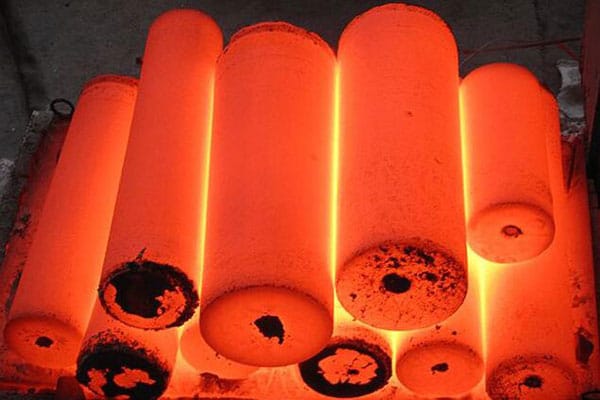Five Annealing Methods for Stainless Steel
2nd Oct 2022

In stainless steel annealing, steel is treated with heat to relieve stress, reduce hardness, and induce ductility. There are several methods for annealing steel. These methods are applied based on four factors that influence each other:
- The desired level of stress relief or hardness reduction
- The crystalline structure of the steel
- The desired appearance of the steel surface
- The service capacity of the steel will be used in
With these things in mind, the following annealing methods are frequently used for stainless steel:
Quench Annealing
This technique is performed on austenitic steels to prevent carbides from precipitating at the grain boundaries - a phenomenon is known as sensitization. Quench annealing prevents sensitization by rapidly cooling steel from 1900 degrees Fahrenheit to a temperature under 900 degrees Fahrenheit using accelerated gas or water quenching.
Process Annealing
This technique is performed on martensitic and ferritic steels that do not require maximum softness. Heated to a temperature of between 1400 degrees Fahrenheit and 1525 degrees Fahrenheit, the steel is then cooled at a rate of roughly 75 degrees Fahrenheit per hour to induce softness.
Stabilize Annealing
Performed in succession to another type of annealing, this technique is performed on steels that contain titanium and niobium and will be used in corrosive service conditions. The steel is heated to between 1600 degrees Fahrenheit and 1650 degrees Fahrenheit, held at this temperature for several hours, and then cooled using accelerated gas or water quenching. The result is that chromium carbide is prevented from precipitating, which serves as an anti-corrosion measure.
Bright Annealing
This technique is performed to preserve the steel surface quality while removing stress and inducing ductility. Performed in atmosphere-controlled furnaces that contain an atmosphere of dissociated ammonia or nitrogen/hydrogen, bright annealing is the superior option for removing oxidization from the annealing process.
Full Annealing
This technique is performed on ferritic and non-ferritic stainless steels to improve cold workability, dimensional stability, and the ability to be machined. The steel is heated to its annealing (roughly 120 degrees Fahrenheit above the austenitic temperature range), held at this temperature for several hours, and then the furnace is cooled to ambient temperature. The result is a high degree of softness.
Other Heat Treatments for Stainless Steel
In addition to annealing, stainless steel may also undergo tempering, stress relief, and normalizing to remove stresses and lower hardness. Tempering relieves stresses that result from quenching and cooling and reduces hardness to meet mechanical requirements. Stress relief reduces stresses that result from cold working, machining, flame cutting, or welding fabrication. Normalizing is performed on ferrous stainless steels as a precursor to hardening, or to improve their ability to be machined.